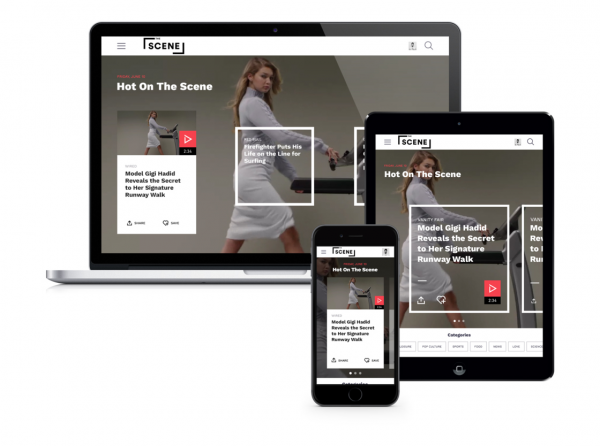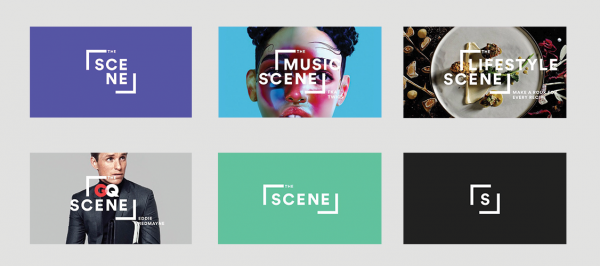



Image Credit : Code and Theory

Project Overview
For many around the world, Condé Nast represents the gold standard of publishing. With pre-existing content streams from a portfolio of magazines that includes Vogue, The New Yorker, Variety, Wired, W, Condé Nast Traveler, Bon Apetit, Gentleman’s Quarterly, and more, we were challenged to conceive and craft a one-stop destination for all of Condé Nast’s video content. Aligning their digital video experience with contemporary content consumption habits, we set out to build a platform and editorial system that honored the design pedigree that has made Condé Nast the authority in modern publishing.
Project Commissioner
Project Creator
Project Brief
Since Condé Nast’s portfolio appeals to a diverse range of readers and content consumers, our analysts worked with Condé Nast’s digital team to paint a clear picture of The Scene’s particular audience. We determined that The Scene should be built for the “cultured millennial” user, aged 27 and up, with “more money than time.” With an established career, they’re well on their way to curating an aspirational lifestyle—and that includes how they consume digital content. We had to give these self-tastemakers a platform to discover, save, and share the content they value.
Using this audience as a foundation for our designs, we determined that The Scene should focus on quality curation and novel, editorialized groupings of video content across brands, rather than a comprehensive “news-feed” style aggregator. With this “less is more” approach, we brought The Scene to life.
Project Need
The Scene is a video platform that surfaces original content from Conde Nast brands like Vogue, Vanity Fair, GQ and Wired, and content from partners like BuzzFeed and Warner Music Group.
A new brand strategy positioned The Scene as a premium curator and empowered them to assert their own identity within the Conde Nast network. Based on that approach we designed a user experience that would allow editors to retitle and package videos that would create a narrative unique to The Scene.
Condé Nast’s publications produce a high volume of premium video content. In order to get more mileage and exposure out of this precious content, and celebrate the breadth of their magazines, content packages form the basis of The Scene. We empowered the new site’s fresh editorial team with a means to create engaging packages of video content from across the Condé Nast ecosystem, and in turn, craft a narrative and respond to trending culture and current events.
User Experience
In crafting The Scene from scratch, we were faced with a perplexing visual and user experience design challenge. The Scene is based on a single content type—video—as opposed to usual sites that create a visual and browsing rhythm by mingling different forms of content (photo, audio, video, charts, text, social content) side by side. Rather than cluttering the site, we evoke the fact that the available content is video by having hero clips from each video play automatically in the background of the site as users scroll over different content modules. In order to break up the content and let the reader breathe, content subcategories—like Travel, Food, Leisure, and Entertainment—are presented as visually-compelling breakers.
The whole site is based around the experience principle that most modern readers will enter the site through a side door, as every aspect of the site is inherently shareable. When you enter the site through a video link, you can watch that video as you scroll and explore. The video will stick to the top left of the screen, meaning you can still access great content and line up your next video while enjoying what brought you to the site in the first place.
We wanted to make browsing The Scene as passive an experience as possible. Users are asked to make very few decisions, and are empowered to see a breadth of content without being pathed away from the site.
Project Marketing
In May, The Scene’s mobile and tablet app launched in the App Store to rave reviews. The app features an even more leaned-back, passive browsing experience than the desktop site. Users have the option to toggle on or off daily offline packages, which will activate the automatic download of three great videos for consumption on or offline (like on the subway). Featuring a video overlay experience inspired by Facebook’s mobile video consumption experience, users also see personalization features such as a Tinder-style swipe functionality that will help the app recommend video content more precisely attuned to a user's interests.
Digital - Entertainment & Leisure
Digital services have overtaken entertainment and leisure. They influence what and how we watch or listen to, where and how we eat, dine and play, how we book and how we interact before during and after entertainment events. We're looking for nominations that make entertainment even more entertaining.
More Details

